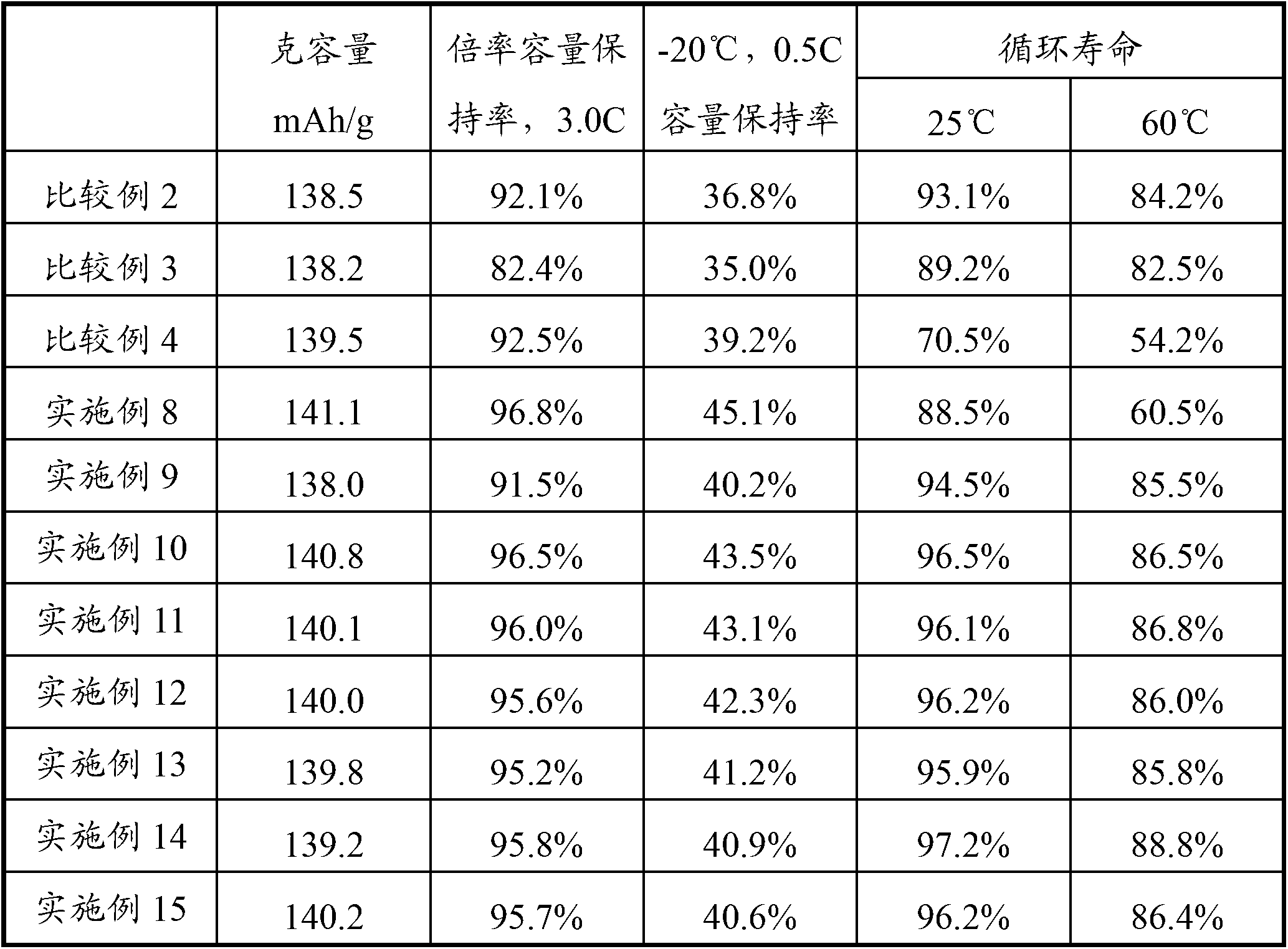Lithium-ion secondary battery and electrolyte thereof
A secondary battery and electrolyte technology, applied to secondary batteries, non-aqueous electrolyte battery electrodes, circuits, etc., can solve the problems of poor low-temperature charge and discharge characteristics of batteries, and the inability to fully meet the conductivity requirements of lithium-ion secondary batteries.
- Summary
- Abstract
- Description
- Claims
- Application Information
AI Technical Summary
Problems solved by technology
Method used
Image
Examples
Embodiment 1
[0026] Example 1: Mix ethylene carbonate (EC), dimethyl carbonate (DMC), propylene carbonate (PC), and ethyl acetate (EA) in a mass ratio of 30:20:10:40, and add LiPF 6 , so that the concentration is 1.0mol / L, adding vinylene carbonate (VC) accounting for 2% of the total weight of the electrolyte.
Embodiment 2
[0027] Example 2: Mix ethylene carbonate (EC), dimethyl carbonate (DMC), propylene carbonate (PC), and ethyl acetate (EA) in a mass ratio of 30:20:10:40, and add LiPF 6 , so that the concentration is 1.0mol / L, add 2% of vinylene carbonate (VC) and 10% of fluoroethylene carbonate (FEC) accounting for the total weight of the electrolyte.
Embodiment 3
[0028] Example 3: Mix ethylene carbonate (EC), dimethyl carbonate (DMC), propylene carbonate (PC), and ethyl acetate (EA) in a mass ratio of 30:20:10:40, and add LiPF 6 , so that the concentration is 1.0mol / L, add 2% of vinylene carbonate (VC) and 4% of fluoroethylene carbonate (FEC) accounting for the total weight of the electrolyte.
PUM
| Property | Measurement | Unit |
|---|---|---|
| electrical conductivity | aaaaa | aaaaa |
| viscosity | aaaaa | aaaaa |
| thickness | aaaaa | aaaaa |
Abstract
Description
Claims
Application Information
 Login to View More
Login to View More - R&D
- Intellectual Property
- Life Sciences
- Materials
- Tech Scout
- Unparalleled Data Quality
- Higher Quality Content
- 60% Fewer Hallucinations
Browse by: Latest US Patents, China's latest patents, Technical Efficacy Thesaurus, Application Domain, Technology Topic, Popular Technical Reports.
© 2025 PatSnap. All rights reserved.Legal|Privacy policy|Modern Slavery Act Transparency Statement|Sitemap|About US| Contact US: help@patsnap.com

